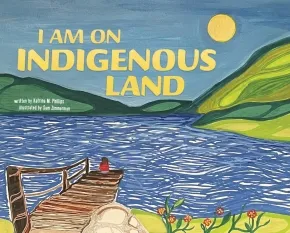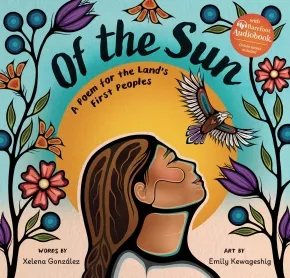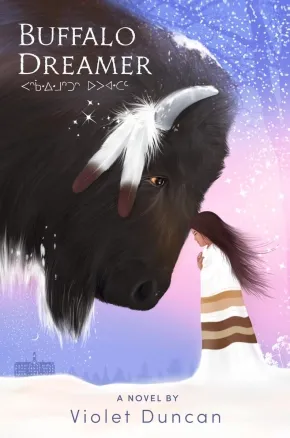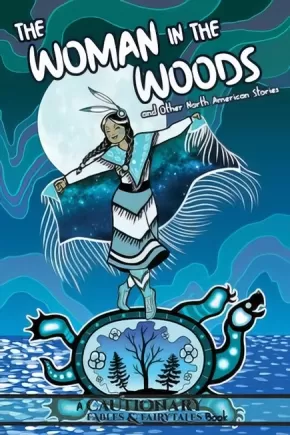
Indigenous Peoples in the Caribbean
1
-
5
of
5 Results;
Sort By
I Am on Indigenous Land
$25.99
Format:
Hardcover
Text Content Territories:
Indigenous American; Native American; Shawnee; Seminole; Salish; Coast Salish; Nisqually; Navajo (Diné); Ho-Chunk (Winnebago); Haudenosaunee (Iroquois); Tuscarora; Chickasaw; Blackfoot Confederacy (Siksikaitsitapi); Anishinaabeg; Ojibwe (Chippewa); Indigenous Caribbean; Taino;
ISBN / Barcode: 9781684363087
Synopsis:
Synopsis:
With simple, lyrical text and vibrant panoramic illustrations, this picture book explores the beauty and resources of thirteen ancestral Indigenous lands and how we all use those lands each day. Simple poetry and portrayals of children and families enjoying rivers, bike paths, beaches, and parks show how everyday activities can include honoring Indigenous nations and cultures.
Author Katrina Phillips (Ojibwe citizen) and illustrator Sam Zimmerman (Ojibwe direct descendant) together have crafted a loving tribute that gently demonstrates recognition and acknowledgement of the nations of people who first called these lands home.
Educator Information
Recommended for ages 3 to 9.
Additional Information
32 pages | 10.00" x 8.00" | Hardcover
Of the Sun: A Poem for the Land's First Peoples
$22.99
Format:
Hardcover
Text Content Territories:
Indigenous American; Indigenous Canadian; Indigenous Caribbean; Indigenous Peoples in Mexico; Indigenous South American;
Grade Levels: Preschool; Kindergarten;
ISBN / Barcode: 9798888596500
Synopsis:
Synopsis:
A powerful and hopeful ode to Indigenous children.
Indigenous. Native. On this land, you may roam.
Child of the sun, on this land, you are home.
Of the Sun is an uplifting and mighty poem that wraps the Indigenous children of the Americas in reassuring words filled with hope for a brighter future and reminders of their bond and importance to the land. Each page fills them with pride and awe of their cultural heritage and invites them to unite and inspire change in the world.
Paired with powerful art reflecting cultures of various Indigenous Nations and Tribes, the poem offers all readers a sense of the history and majesty of the land we live on and how we can better care for ourselves and the world when we recognize our connection to the land and to each other.
Written by Xelena González, poet and activist in the Native and Latinx communities, and an enrolled member of the Tap Pilam Coahuiltecan Nation. Bold illustrations by prominent Anishinaabe illustrator Emily Kewageshig depict landscapes across the Americas and children from many backgrounds
Endnotes provide more information on Native and Indigenous unity and activism in younger generations
Reviews
"Of The Sun is a loving homage to the Indigenous peoples of this land—both in González’s beautiful, lyrical poem and Kewageshig’s warm, vibrant Anishinaabe-styled artwork. A wonderful read aloud you must add to bookshelves at home, at school, and in community!" - Traci Sorell, award-winning author of We Are Grateful Otsaliheliga and At The Mountain’s Base
"A luminous song, poem, promise
of cultures and connection,
of kinship and caring,
for Indigenous children across the continent." - Cynthia Leitich Smith, author of Jingle Dancer
Educator Information
Recommended for ages 3 to 5.
Subjects / Themes / Topics Included: Indigenous Peoples in the Americas; Poetry; Land Connection; Inuit Clothing; Traditional Hair Bun (tsiiyéél); Concheros Dance; Three Sisters; La Danza de la Flor de Piña; Smoke Dance; Jingle Dress Dance; Manoomin (Wild Rice); English Words from Indigenous Languages; Indigenous Farming Practices; Bison; Land Back Movement.
Additional Information
32 pages | 10.00" x 9.75" | Hardcover
Buffalo Dreamer
$24.50
Format:
Hardcover
Text Content Territories:
Indigenous Canadian; First Nations; Cree (Nehiyawak);
ISBN / Barcode: 9780593624814
Synopsis:
Synopsis:
An illuminating novel about the importance of reclaiming the past, based on the author’s family history.
Summer and her family always spend relaxed summers in Alberta, Canada, on the reservation where her mom’s family lives. But this year is turning out to be an eye-opening one. First, Summer has begun to have vivid dreams in which she's running away from one of the many real-life residential schools that tore Native children from their families and tried to erase their Native identities. Not long after that, she learns that unmarked children’s graves have been discovered at the school her grandpa attended as a child. Now more folks are speaking up about their harrowing experiences at these places, including her grandfather. Summer cherishes her heritage and is heartbroken about all her grandfather was forced to give up and miss out on. When the town holds a rally, she’s proud to take part to acknowledge the painful past and speak of her hopes for the future, and anxious to find someone who can fill her in on the source of her unsettling dreams.
Reviews
“An important middle grade novel about a family reunion, as well as the histories of the Indian residential schools that were set up across the U.S. and Canada. . . . Based on Duncan’s family history, this novel balances an exploration of a painful events with idyllic scenes of intergenerational love and connection. Beautiful descriptions of traditional Native American culture and dress make scenes vivid for readers as Summer’s family rides horses, picks berries, prepares meals, and shares stories, even ones that have remained unspoken. A powerful addition to all middle grade library shelves highlighting a time in history that has been hidden and often forgotten in both Canada and the U.S.” —School Library
“Past and present converge in Duncan's novel about an extended Canadian Cree family spending vacation time together. . . . This story of maturation and involvement in community will appeal to readers interested in the past and in present-day social action.” —Booklist
“Summer is earnest, thoughtful, and unfailingly kind . . . the perfect narrator to introduce a heavy topic that is underexplored in literature for youth. For readers unfamiliar with the schools, enough context is given to understand the immense evil of a system that ripped Indigenous children away from their families to essentially abuse them into being acceptably ‘standard.’ Duncan’s powerful afterward offers a brief description of how her own family survived the harrowing experience of the residential school system, ending the book with a poignant sense of intimacy.” —The Bulletin of the Center for Children’s Books
Educator Information
Recommended for ages 10+.
Additional Information
128 pages | 5.69" x 8.56" | Hardcover
The Sea-Ringed World: Sacred Stories of the America
$25.99
Artists:
Format:
Paperback
Text Content Territories:
Indigenous American; Alaska Native; Alutiiq (Sugpiaq); Native American; Anishinaabeg; Ojibwe (Chippewa); Hopi; Sioux; Indigenous Canadian; Inuit; Indigenous Caribbean; Taino; Indigenous Central American; Indigenous Peoples in Costa Rica; Bribri; Indigenous Peoples in Mexico; Huichol; Nahuas; Maya; Nahuas; Indigenous South American;
ISBN / Barcode: 9781646141517
Synopsis:
Synopsis:
A collection of stories from nations and cultures across our two continents—the Sea-Ringed World, as the Aztecs called it—from the Andes all the way up to Alaska.
Fifteen thousand years before Europeans stepped foot in the Americas, people had already spread from tip to tip and coast to coast. Like all humans, these Native Americans sought to understand their place in the universe, the nature of their relationship with the divine, and the origin of the world into which their ancestors had emerged. The answers lay in their sacred stories.
Educator Information
Recommended for ages 8+
Additional Information
256 pages | 6.31" x 9.11" | Paperback
The Woman in the Woods and Other North American Stories
$22.95
Artists:
Editors:
Format:
Paperback
Text Content Territories:
Indigenous Canadian; First Nations; Anishinaabeg; Odawa (Ottawa); Ojibway; Serpent River First Nation; Cree (Nehiyawak); Plains Cree; Little Pine First Nation; Métis; Indigenous;
ISBN / Barcode: 9781945820977
Synopsis:
Synopsis:
“Be careful of what you accept from spirits.”
Loup Garrou, trickster rabbits, and spirits with names that can’t be spoken — the plains and forests of North America are alive with characters like these, all waiting to meet you in this collection of folklore retold in comics!
Reviews
"Enjoyable for reading aloud or sharing around a campfire." -- KIRKUS
"Explores the stories, passed down through generations, of the people who have inhabited Turtle Island since time immemorial." - Women Write About Comics
Educator Information
Comic book recommended for ages 10 to 12.
The book features more than 100 pages of entertaining and educational stories by artists and writers from Indigenous nations across the continent, including:
- “As It Was Told to Me”, a creation tale that shows that the world needs good and bad to exist, which is written and illustrated by Elijah Forbes, a transgender Odawa illustrator who has facilitated the creation of illustration projects such as the 2020 “Trans Awareness Week.”
- “Chokfi,” the story of the trickster rabbit, who is jealous of Otter's fur coat and tries to steal it, by writer Jordaan Arledge, a trans Chickasaw comic writer and the founder of Arledge Comics, and artist Mekala Nava.
- “White Horse Plains”, a cautionary tale about greed that comes from the Métis settlement St. Francois Xavier, as told by Rhael McGregor, a Non-Binary/Two-Spirit Métis comic artist and animator from Winnipeg, Manitoba.
- “Rougarou” by Mystery Solving Lesbians writer Maija Ambrose Plamondon and Métis-based artist Milo Applejohn, about a werewolf-like creature that haunts the Métis communities.
- “Agonjin In the Water” by the non-binary Ojibawe artist Alice RL, about a girl whose tribe is suffering from a drought and finds a Mishipeshu while searching for water.
- “Woman in the Woods” by the Cuban Taíno artist and storyteller Mercedes Acosta about a curious girl who sees a mysterious figure in the woods at night.
- “Into Darkness” by Izzy Roberts, a Michigan-based illustrator and a member of the Navajo Nation and Kinyaa’áanii clan, about a creature so dangerous and scary that no one dares utter its name.
Additional Information
120 pages | 6.06" x 9.04" | Black and white throughout | Paperback
Sort By











